Hot Tin Roof Review
Of the innumerable dangerous professions that fiction twists, it’s hard to think of one viewed through a goofier lens than the private-eye. We’re all vaguely aware, for instance, that secret agents don’t have time to swirl Martinis in gaudy casinos because they’re too busy sitting in a darkened room, listening in on phone conversations. We know, despite the flights of escapism, that reality is far from glamorous, and yet, thanks mostly to the lingering effects of film noir, we seem to have trouble shaking off the idea that private detectives get all their work done by hanging around at night in a trench coat, following around other people in trench coats, engaging in rooftop chases and inexplicably finding clues that a trained team of forensic police investigators somehow missed. Consequentially, congratulations go out to Hot Tin Roof, a game that wears noir like a clown wears a big red nose, for really capturing the clueless, hopeless, desperate slog of detective work. If it wasn’t for the exploding gumdrops, the talking animals, the subterranean city and absolutely everything else in the game, you could call it realistic.
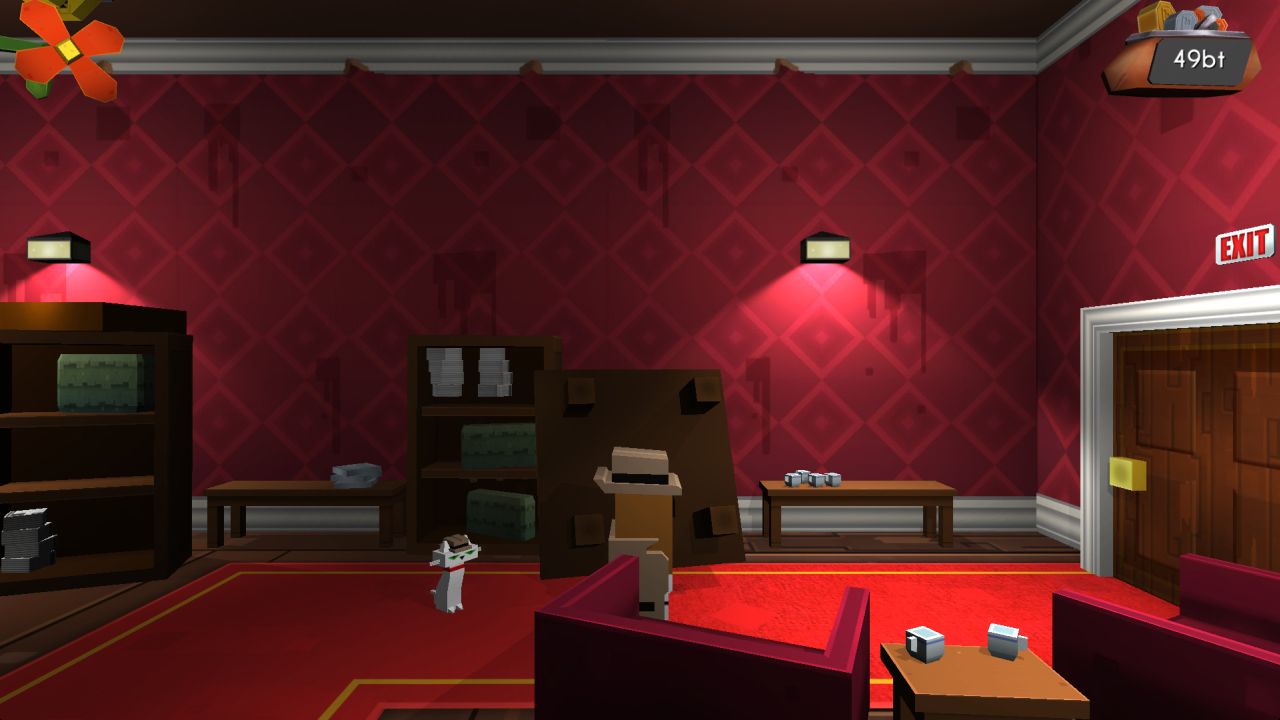
We’re getting ahead of ourselves again, though. Hot Tin Roof: The Game With The Unnecessarily Long Quirky Subtitle concerns Inspector Emma Jones, a newly appointed private-eye with a sassy feline sidekick and an unusual pacifist streak, qualities that strangely don’t actually make the game a point-and-click adventure – or at least, not all the way through. Sure, there are dialogue trees to bumble your way through and rooms to be meticulously searched, but at heart the game is really a Metroidvania, a genre that has traditionally steered clear of film noir because making the Ice Beam seem plausible in that kind of setting is a real nightmare. In its place, we have… bullets. Ahem.
That’s not the whole story, of course. Hot Tin Roof is not any ordinary noir tale, but a quirky parody, and that means you can get away with a metric ton of contrivances as long as they’re suitably wacky. ‘Bullets’, in this context, could mean grapple bullets, knockback bullets, gum bullets, fire bullets, air bullets (but not air grenades, ’cause that would be just silly), all packaged up in the sort of colourful boxes you’d expect to contain cheap, mass-produced sweets. What’s really nice about these upgrades, as opposed to many Metroidvanias – even Metroid Prime, the great queen on her purple cube-shaped throne, is a bit guilty of this – is that they unlock progress in more complex ways than just ‘use coloured gun on same-coloured door’, allowing you to overcome natural obstacles in your surroundings like high ledges, closed trapdoors and heavy chunks of bridge support. There are a few annoyances, of course: the bubble bullets, ostensibly for revealing hidden environment elements, are usable only a handful of times throughout the entire game, and the only way to acquire the fire bullets – which are, I should point out, absolutely necessary to finish the game – is to go through the egregious process of filling your starting wallet up – which, naturally, has the holding capacity of a child’s bladder on a long road trip – buying a bigger wallet, filling that up, and then buying them.
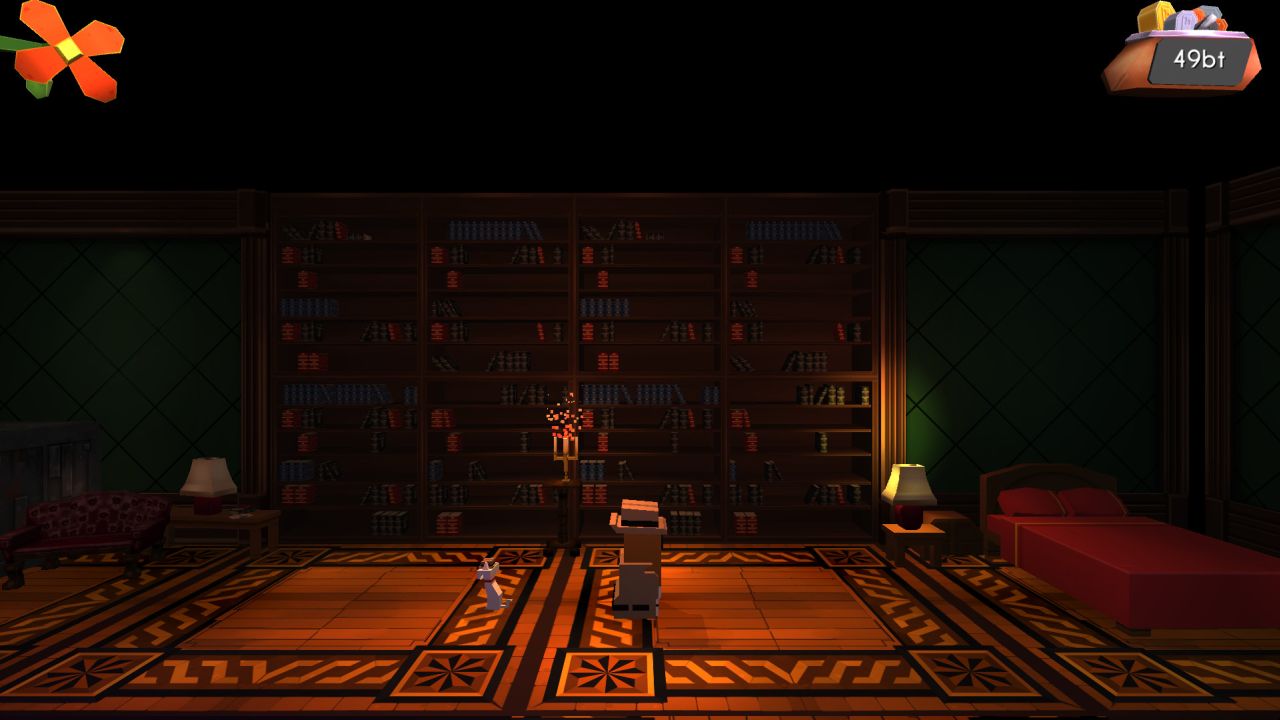
Strangely enough, the one type of bullet you never get your hands on is the good old murdering kind. I don’t want to be the kind of person who, upon looking at something innocent and charming, asks “d’you think we could bolt some miniguns to this somehow?”, but the omission of combat is definitely a bit of a record scratch. I’ve always felt that the best Metroidvania upgrades are ones that serve both offensive and exploratory purposes, but since every upgrade in Hot Tin Roof can only serve the latter function, progressing through it feels less like growing as a character and more like populating a toolbox with a set of fiddly watchmaker’s spanners. The core Metroidvania experience is still there, admittedly, but without adversity beyond occasional environmental hazards it quickly starts to feel really quite pointless. When the most dangerous thing you might encounter is a leaking raw sewage pipe, why bother seeking out side-paths at all? When I blunder into a secret room and the first thought to enter my head is “oh Christ, not another health upgrade,” something has clearly gone very, very wrong.
To fill these heart-rending wounds, we have the adventure game elements, the inclusion of which isn’t entirely unjustified, I suppose; both genres tend to have you dancing the Backtrack Bolero whether you like it or not. Those of you who tend to run screaming at the first sign of Sierra logic can probably rest easy, though, as Cat On A Hot Tin Roof 2: The Movie: The Game just serves you dialogue trees with a side of ‘use item on person’ inventory puzzles. Alright, sometimes you’ll be expected to search for clues, but instead of clicking on pixel-sized scenery details, you’ll go through the much less frustrating – if slightly patronising – process of pressing ‘E’ in extremely well-signposted locations. Dialogue itself is fairly well-written and even brought a smile to my face here and there, usually when my sarcastic sidekick – the titular cat in a tiny brown fedora – chipped in with an irreverent remark.
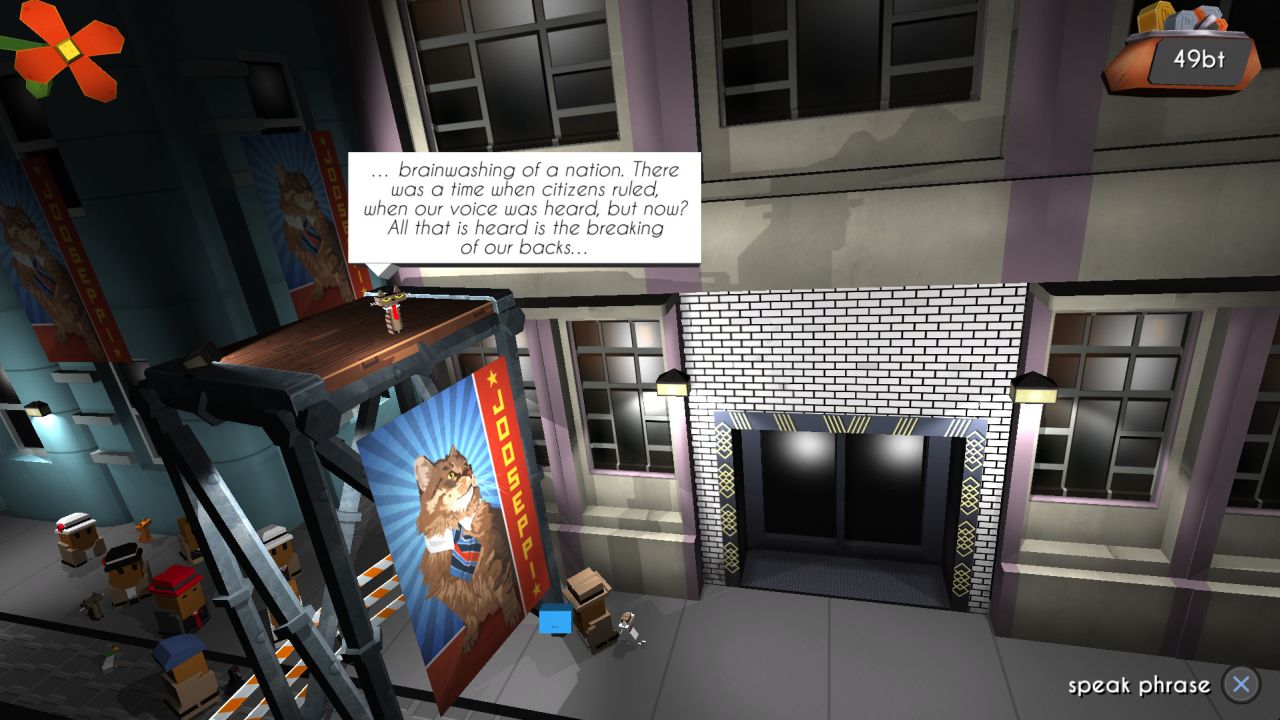
But good dialogue doesn’t always make for good dialogue trees. Despite Hot Tin Roof being ostensibly fairly story-driven, most of your dialogue options might as well have you blowing raspberries for all the effect they actually have on the conversations, which often seem to drag on far beyond the point of necessity. Unfortunately, unlike just about every other adventure game under the Sun, there’s no conversation equivalent of “look, I left the kettle on and really have to go”: once you’re locked into a conversation, the only way to get out is to just run through the entire thing, an outcome that’s especially frustrating when you’re already at a loose end running around looking for new dialogue options. This, as it happens, is a pretty common occurrence: the game’s dedication to letting you work things out from the clues you’ve accumulated, while admirable, often means blundering around for hours at a time because you have no idea what you’re actually supposed to be doing next. You know how there’s that bit in every generic mystery novel where the protagonist ends up in a lousy bar at some god-forsaken hour, completely stumped, all out of luck, until one tiny flash of inspiration pulls all the evidence together? Imagine being stuck in the former part of that situation for around half the game. No wonder they’re all cynical brooding substance-abusers; it turns out being a detective isn’t much fun.
Don’t imagine that having a clear target means that you won’t end up trekking back and forth across the same old mean streets, though, ’cause navigating the world of Hot Tin Roof is nothing if not a kick in the teeth. Inspector Jones grew up in a good, honest, side-scrolling household, see, but moving on a single plane won’t cut it in this rotten city of vice, secrets, and three-dimensional geometry. Sudden ninety degree camera rotations at pre-determined points let you move in all directions, but between the disorientation associated with them, the incredibly homogeneous environments – at least, in the more Metroidvania-y areas – and the ease with which one can miss the tiny cue for moving into the foreground, visualising the layout of your surroundings is like trying to traverse an M. C. Escher landscape while staring at nothing but the floors. It might not seem quite so pressing an issue when you’re just wandering around looking for flowers to staple to your lapel – really, that’s how your health is represented – but when you’re, say, looking to get a game over with reasonably quickly, possibly for the purposes of writing about it, or possibly because you have zero reason to acquire upgrades… well, I think you understand. Map screen? Don’t be silly, what kind of Metroidvania would have a map screen?
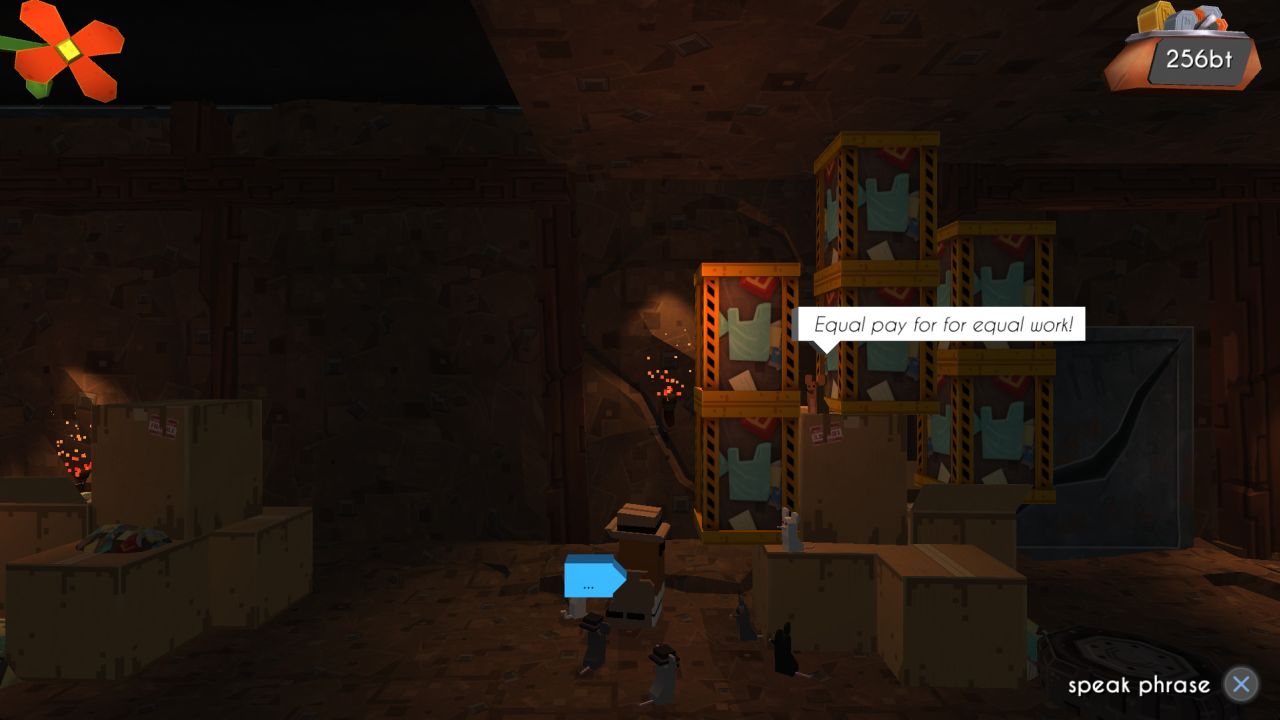
Goodness me, we haven’t even touched on Hot Tin Roof’s really interesting mechanic yet. As mentioned before, you can change the rounds loaded into your revolver in order to grapple surfaces, wash dishes, light cigars, that sort of thing, but instead of manifesting as a ‘change ammo’ button, you’re given a reloading screen that falls somewhere between Receiver and one of those fiddly Nintendo DS touch-screen minigames that developers used to shoehorn in so that Reggie wouldn’t break their kneecaps. You crack your revolver open, spin the cylinder around, click the cylinders to fill them with whatever bullets you feel are about to be useful, then snap it shut again and carry on. It’s a cute feature, and for maybe the first half-hour it’s tolerable, but as the hours wear on my patience for doing the same menial task over and over wears thin. The varied demands of your surroundings mean that you’ll be swapping out the contents of your gun almost non-stop, but since the interface for doing so is largely mouse-driven, there’s little hope of building any muscle memory to speed up the process. Hot Tin Roof isn’t normally the type of game where you’d attach much value to the flow, but when you’re stopping every few paces to fiddle with your gun for ten to fifteen seconds, the whole experience ends up about as smooth as being pushed down a staircase in a wheelchair. I’m grateful for the function that lets you quickly reload the same type of bullets you just expelled, but d’you think you could give some hint that the feature actually exists, guys? I went through almost half the game before discovering it.
I suppose what’s really aggrieving about this whole mechanic is that there doesn’t really seem to be a reason for it to be there in the first place. There’s serious potential here for some really clever puzzles where you pre-load specific sequences of bullets to complete tasks, but it only comes up towards the end of the game and never gets any more complex than ‘ignite explosive rounds with fire rounds’, which is stretching the definition of ‘puzzle’ a wee bit. Not that there’s much to measure up to; outside of the actual business of deducing from clues – a process that more often than not boils down to brute-forcing the solution – the game is rarely more intellectually strenuous than the good old standby of ‘hit four switches’.
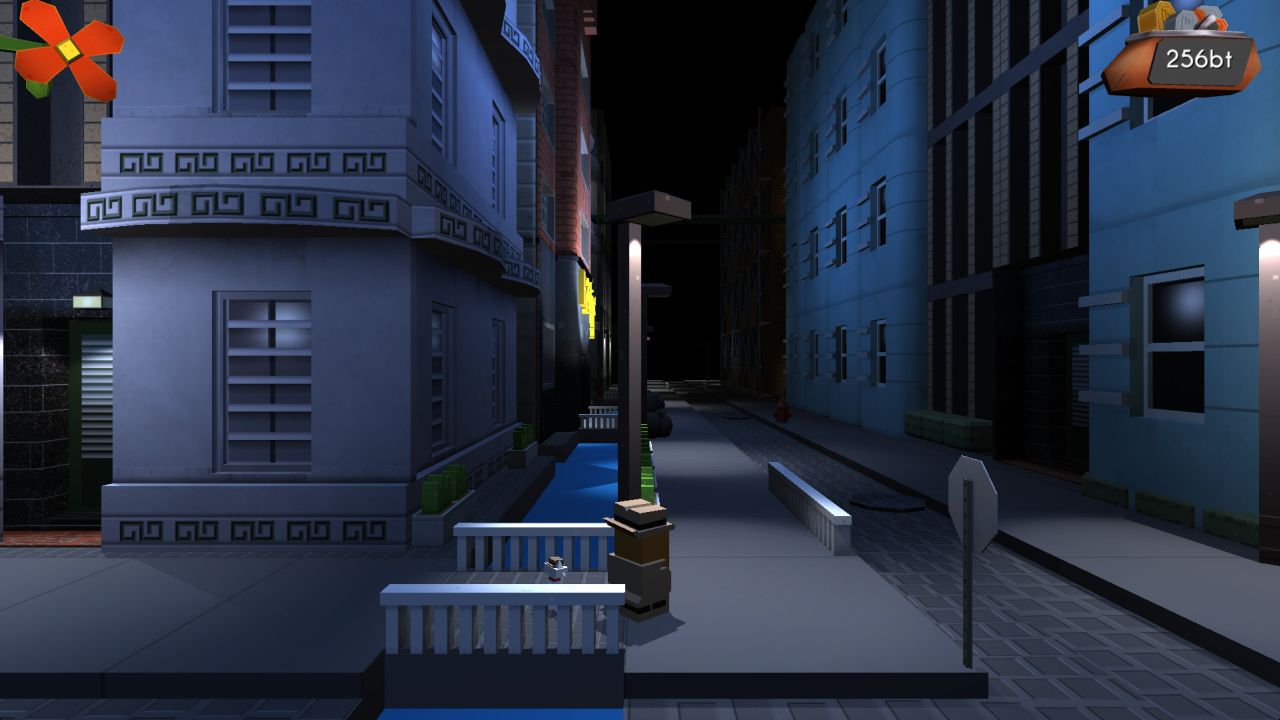
How does it run, then? Well, with the exception of the framerate, which occasionally dips pretty heavily despite a loading zone bifurcating the two or three city blocks that comprise the overworld, Hot Tin Roof is filled with harmless whoopsies more than anything else. Dialogue lines, for instance, are pinned next to the characters that speak them, which works fine right up until the point where you start having a one-sided conversation because your partner’s pathfinding has yet to place him anywhere in sight. I also suspect that the knockback rounds, which give you the 1940s equivalent of a rocket jump, were a late addition, because a lot of the invisible triggers in the game – for changing levels, rotating the camera and such – don’t account for the possibility that you won’t be at ground level, meaning that it’s incredibly easy to accidentally soar over them and end up walking off the edges of the screen, through world geometry and into The Negative Zone. There, you will presumably find all the items and characters that the game has a habit of rendering in the distance when it’s not supposed to. Occasionally you’ll find bits of the environment that are a lot less solid than they appear, but to my dismay I’ve yet to find any hidden upgrades behind them – just pockets of the empty void and occasional accidental sequence breaks.
It’s all a damn shame, really, because it’s clear from even the most cursory glance that Hot Tin Roof is a game with a heart big enough to engulf almost – the keyword being almost – all of its flaws. In a way it reminds me of Brutal Legend: a colourful landslide of character, style, and writing that entertains without fail, spread all too thinly across a fresh style of gameplay that, to countless collective groans, doesn’t really work. That reminds me, I ought to give kudos to the soundtrack. A film noir setting, even one deeply steeped in comedy, wouldn’t be complete without a laid-back jazz quartet to trudge along to, and even if it sometimes sounds like somebody is playing their Sega Master System in the background, it still lends the appropriate atmosphere to the moody, nocturnal city.
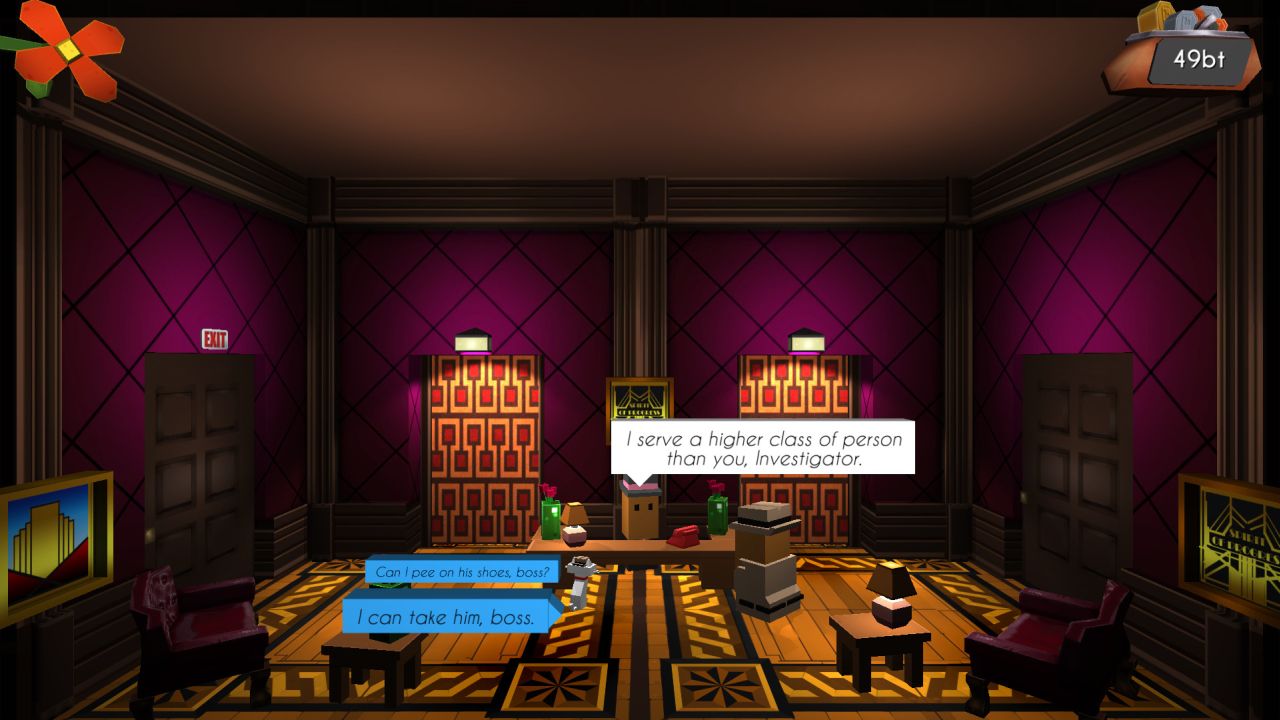
So, here’s where we go back to pretending to offer consumer-friendly advice: is Hot Tin Roof worth it? Well, if you’re the kind of wide-eyed optimistic type who treats indie games as a big colourful bargain bin to dip into when you’re down to your last ten dollars and want to feel all grown up and cultured, then go for it, ’cause it’s a lot more novel than whatever you’re used to. If, on the other hand, you’re a no-nonsense type, cynical enough to make Sam Spade look like a boy scout, and you just want a solid Metroidvania that you can boot up without being hit with a wave of resignation and thoughts along the lines of “oh god, what was I supposed to be doing?”, then steer clear. To those who can stomach its tedium, Hot Tin Roof is an imaginative little adventure; to everybody else, it’s a gut full of lead. That’s pretty noir, right? I think that’s noir.
